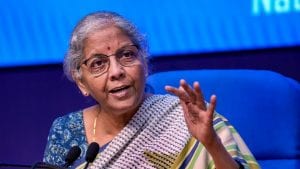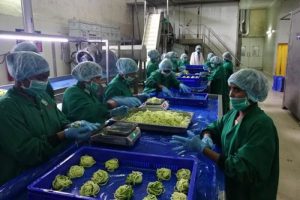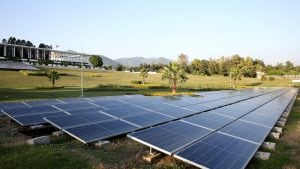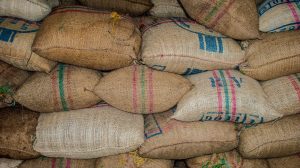Alternative protein — here’s the story of plant-based meat and of a green revolution too

KV Prasad Jun 13, 2022, 06:35 AM IST (Published)
 Listen to the Article (6 Minutes)
Listen to the Article (6 Minutes)
Summary
Alternative proteins–a novel food innovation has the potential to democratise food supply and mitigate public health risks. Traditionally, countries with arable land have been food producers. Often, this food is grown mainly for export. Conversely, it gives countries with a much smaller land mass who are also technology forward like Singapore, Israel, and Qatar the opportunity to be self-reliant and food secure within the next few decades.
A transformative area of food technology, one that has the potential to bring about a paradigmatic change in the way we eat, is certainly going to attract its share of scepticism as well. That’s apart, if we had to truly compare alternative proteins with another field of pioneering innovation, they are to food what renewables are to energy, in an era of sustainable options replacing things that create ecological and climate crisis.
We also know that the journey to develop these replacements has involved almost a century of hard work, cutting-edge innovation, government support, and billions of dollars in investment. While the first wind turbine was used in 1927, it was only in 2021 that renewables provided 28 percent of the total global energy supply. The first lab-grown burger in comparison was developed by Mark Post and eaten on live television in 2013. While science has come a long way and will hasten the process of innovation in the alternative protein sector, it has only been front and centre for a little over a decade.
Also Read: G20 Foreign Ministers’ Meet | India sets the context saying food and energy security are the immediate anxieties
Contrary to common perception, our emotional attachment to meat and food, in general, makes a compelling case for alternative proteins. With the global population set to double its meat demand by 2050, providing a sustainable source of food is crucial. Meeting this challenge will require a critical climate solution that provides a simple switch without sacrificing taste or tradition. Plant-based, fermentation-derived, and cultivated meat offer a more sustainable source of food, making them an essential component of the solution.
Our current food system is heavily dependent on animal agriculture, which is the biggest contributor to the ecological and climate crisis, responsible for 60 percent of greenhouse gas emissions from agriculture, totalling 14.5 percent of all emissions – more than all forms of transportation combined. Livestock farming also causes significant habitat destruction and species loss. Meeting the Paris Climate Agreement obligations will be scientifically and mathematically impossible without a significant reduction in meat production through conventional animal agriculture.
On the other hand, alternative proteins offer a significantly more sustainable option. For example, the Impossible Burger, a plant-based beef burger, uses 96 percent less land, 89 percent less greenhouse gas emissions, and 87 percent less water than a conventional beef burger. While, the Beyond Burger emits 89 percent less greenhouse gases and uses 99 percent less water.
Also Read: India’s G20 Agriculture Deputies convene in Indore to discuss climate-smart initiatives and agricultural advancements
According to a life-cycle analysis and techno-economic assessment, with the usage of renewable energy for the manufacturing process of cultivated meat within a decade, there could be a 17 percent reduction in greenhouse gas emissions to make chicken, 52 percent reduction for pork, and a 92 percent reduction for beef. Furthermore, when it comes to land use, there could be a 63 percent reduction for chicken, a 72 percent reduction for pork, and a 95 percent reduction for beef.
This novel food innovation has the potential to democratise food supply and mitigate public health risks. Traditionally, countries with arable land have been food producers. Often, this food is grown mainly for export. Conversely, alternative proteins give countries with a much smaller land mass who are also technology forward like Singapore, Israel, and Qatar the opportunity to be self-reliant and food secure within the next few decades. Singapore, for example, in its 30 by 30 vision, intends to provide for 30% of the country’s nutritional requirements locally by 2030.
Plant-based meat has zero cholesterol and contains fibre besides being lower in calories and saturated fat when compared to animal-based meat. Notably, alternative proteins also have great potential to continue to improve their nutritional profile. Companies know that the long ingredient lists on plant-based meats need to be cut down and with major investments in R&D and product development, future generations of products can and will be optimised for health and nutrition.
Additionally, by removing livestock from the equation, alternative proteins are also free from harmful growth hormones or antibiotics and have the ability to futureproof our protein supply against antimicrobial resistance, zoonotic diseases, and future pandemics.
World hunger is on the rise and impacts 10 percent of the global population. Over 8 percent of the world’s population is undernourished. Research further indicates that a pandemic-induced blow to global nutrition levels in low and middle-income countries (LMICs) could result in an additional 9.3 million children suffering from wasting (low weight for height) and 2.6 million children suffering from stunting (low height for age).
Climate change will only exacerbate these figures and disproportionately impact the most vulnerable sections of society. Those designing future food systems need to ensure that resilience occupies the front and centre of these innovations.
With 2023 declared globally as the ‘International Year of Millets’, India, for example, has immense potential to leverage these resilient indigenous crops as inputs for a new generation of plant-based products. If innovation is propelled in the right direction, there is a global opportunity to create a variety of high-protein products from indigenous, nitrogen-fixing, and water-efficient crops that promote soil health while improving incomes for smallholding farmers.
Much like these novel climate-hardy crops, the alternative protein sector, ranging from sector builders and manufacturers to investors and entrepreneurs, must show resilience. The pace of technological advancement in the sector is proof that exponential growth is inevitable. In fact, according to Credit Suisse, the industry is estimated to grow to USD 240 billion by 2030, requiring the plant-based supply chain to scale up anywhere between 3x to 10x.
A report by the Good Food Institute predicts that, to capture six per cent of the global meat and seafood market by 2030, 25 million metric tons (MMT) of plant-based meat will need to be produced annually. A significant portion of this supply can come from the Global South, including countries like India. Robust modelling by Deloitte and GFI India indicates that the smart protein sector in India could have a potential domestic market size of $2.4 billion and a further export opportunity of $1.4 billion.
A revolution is inevitable, and the alternative protein sector’s vision is laser-focused on creating a food-secure world in which nutritional gaps can be sustainably bridged. While there is certainly a need for improvement, if we persevere and get it right, we can have delicious, nutritious, and sustainable meat for everyone, and preserve our planet.
—The authors, Mansi Virmani, leads Communications at the Good Food Institute India, and Ambika Hiranandani, is a legal, policy and partnerships advisor to an alternative protein company.

Elon Musk forms several ‘X Holdings’ companies to fund potential Twitter buyout
3 Mins Read
Thursday’s filing dispelled some doubts, though Musk still has work to do. He and his advisers will spend the coming days vetting potential investors for the equity portion of his offer, according to people familiar with the matter

KV Prasad Journo follow politics, process in Parliament and US Congress. Former Congressional APSA-Fulbright Fellow



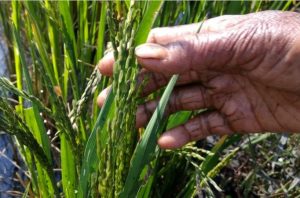






 Listen to the Article
Listen to the Article  Daily Newsletter
Daily Newsletter





